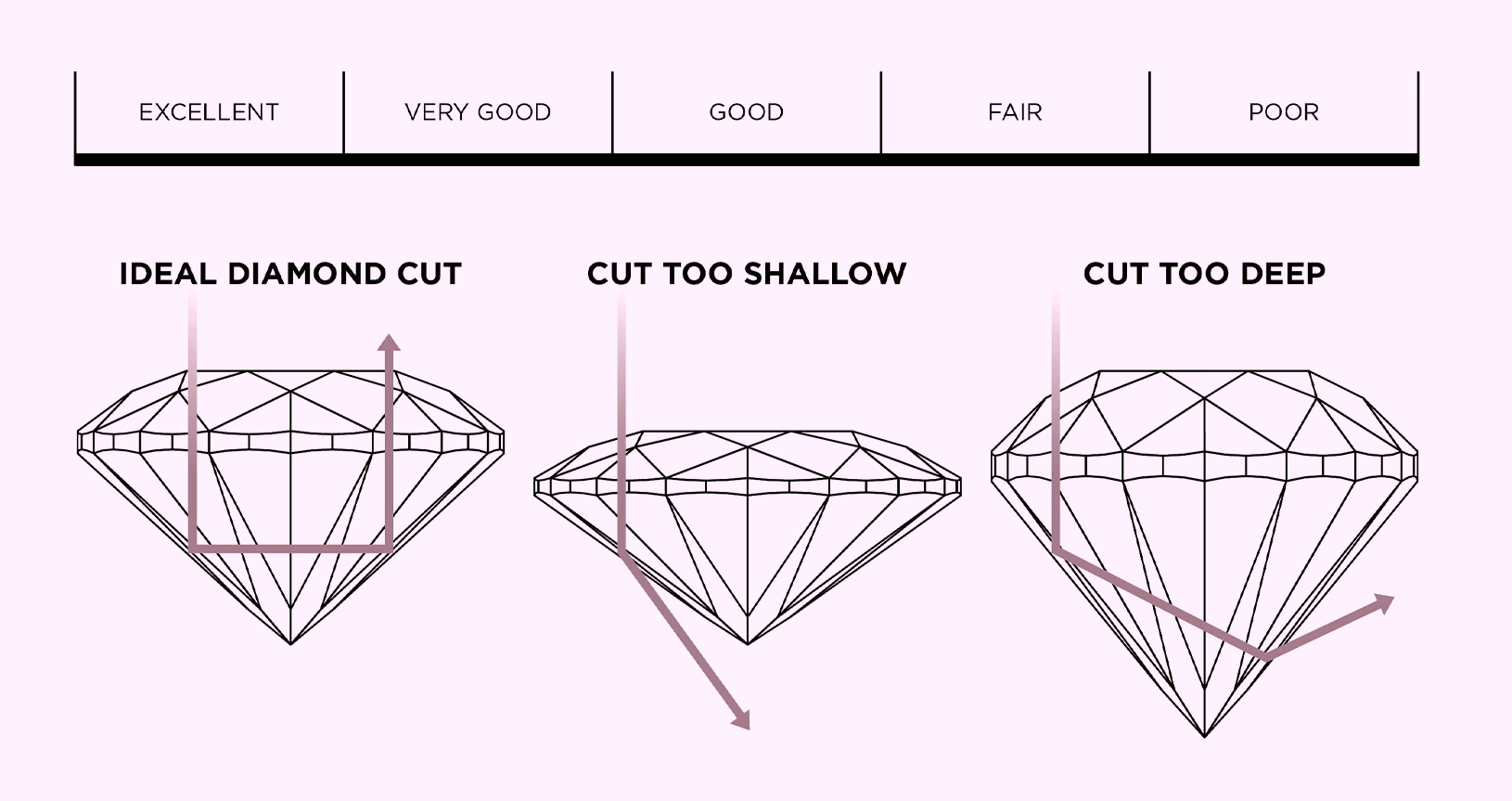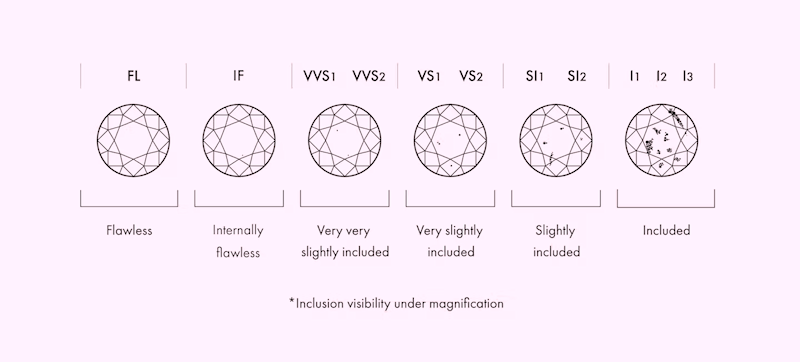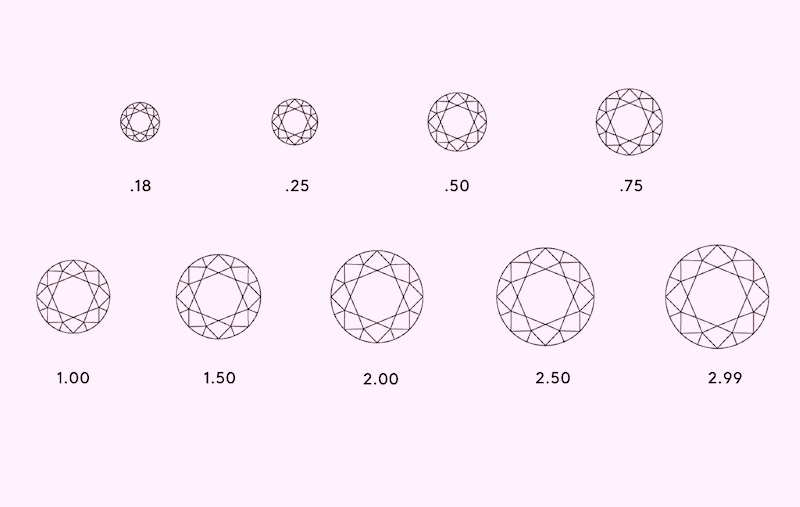The 4 C’s of diamond grading are the four key characteristics that determine the quality and value of a diamond. These are: cut, color, clarity, and carat weight.

Cut (click to learn more): The cut of a diamond refers to its proportions, symmetry, and polish, which determine how well the diamond’s facets interact with light to create sparkle and shine. A well-cut diamond will have precise proportions, symmetry, and polish, allowing light to enter the diamond and reflect back to the viewer’s eye, creating a dazzling display of light and color. On the other hand, a poorly cut diamond may have uneven or asymmetrical proportions, which can cause light to leak out of the diamond instead of reflecting back to the viewer. The cut of a diamond is the most important of the 4 C’s, as it directly affects the diamond’s beauty and sparkle.

Color (click to learn more): The color of a diamond refers to the absence of color in the stone. The highest quality diamonds are colorless, while lower quality diamonds may have a yellow or brown tint. Diamonds are graded on a color scale that ranges from D (colorless) to Z (light yellow or brown). The closer a diamond is to the D end of the scale, the more valuable it is. However, it’s important to note that fancy colored diamonds, such as yellow, pink, or blue diamonds, are considered rare and valuable, and are graded using a different scale.

Clarity (click here to learn more): The clarity of a diamond refers to the presence of blemishes and inclusions in the stone. Blemishes are external flaws on the surface of the diamond, while inclusions are internal flaws that can affect the diamond’s transparency and beauty. The clarity of a diamond is graded on a scale that ranges from FL (flawless) to I3 (included). Flawless diamonds are extremely rare and valuable, while diamonds with more inclusions will be less valuable. However, the size, location, and number of inclusions can also affect a diamond’s value, so it’s important for a gemologist to carefully evaluate the diamond’s clarity.

Carat weight (click to learn more): The carat weight of a diamond refers to its size, with one carat being equal to 0.2 grams. Larger diamonds are more rare and valuable, so the carat weight of a diamond is an important factor in determining its value. However, it’s important to note that the cut and quality of a diamond can also affect its value, so a smaller, high-quality diamond may be more valuable than a larger, lower-quality diamond.
Together, these four characteristics are used by gemologists and jewelers to grade diamonds and determine their value. When shopping for a diamond, it’s important to consider all four of the 4 C’s, as they will all affect the diamond’s beauty and value